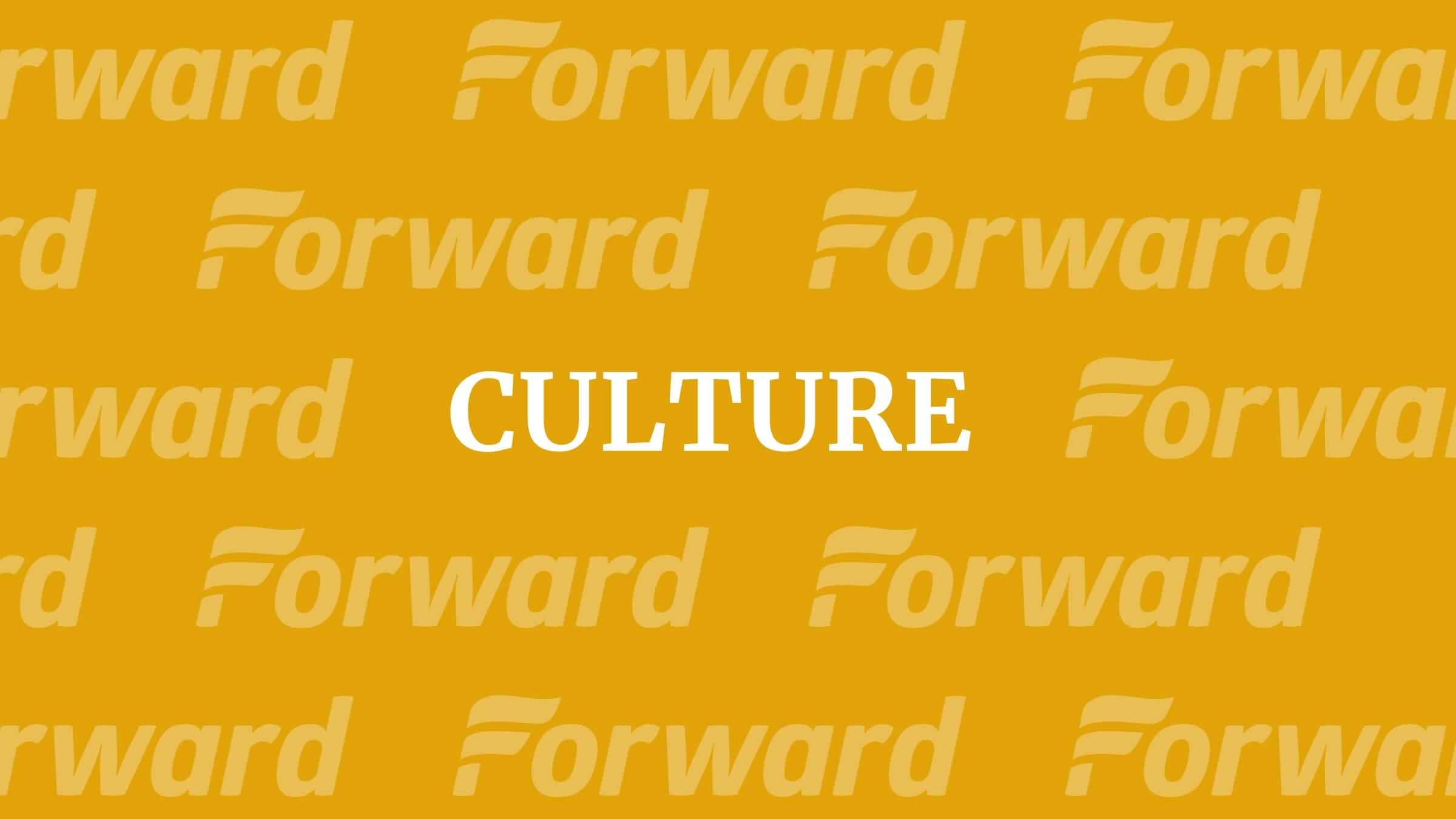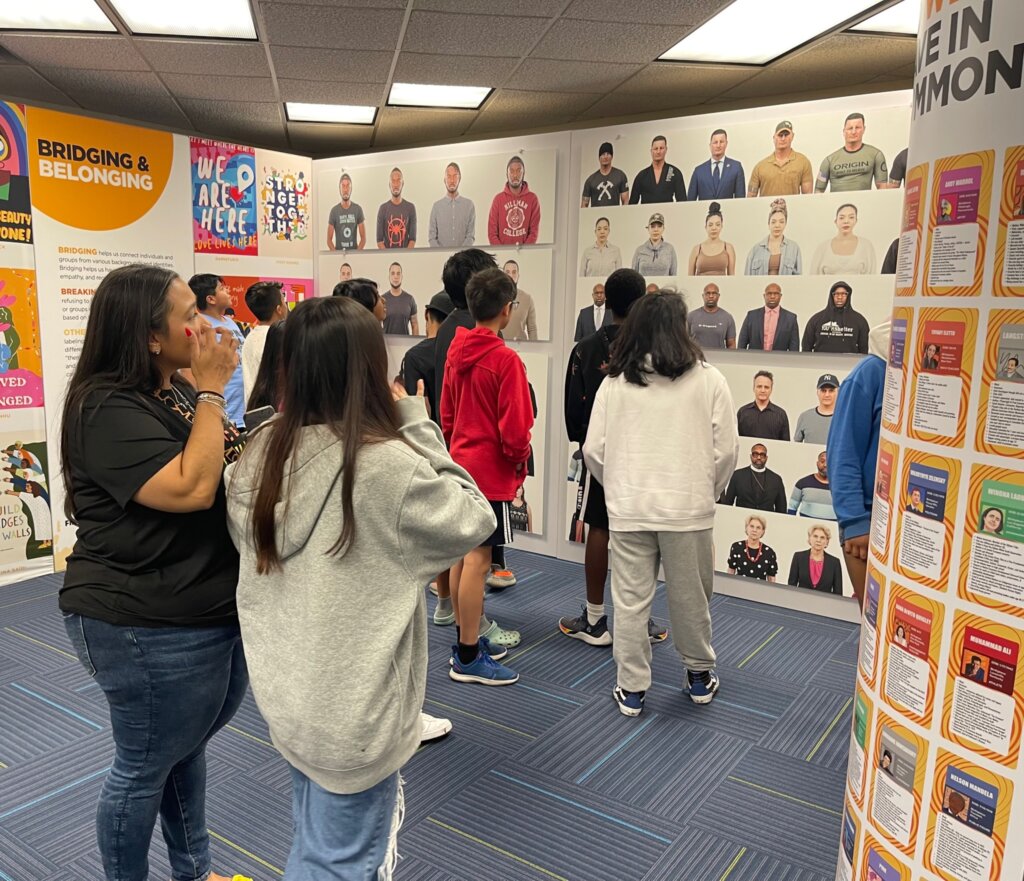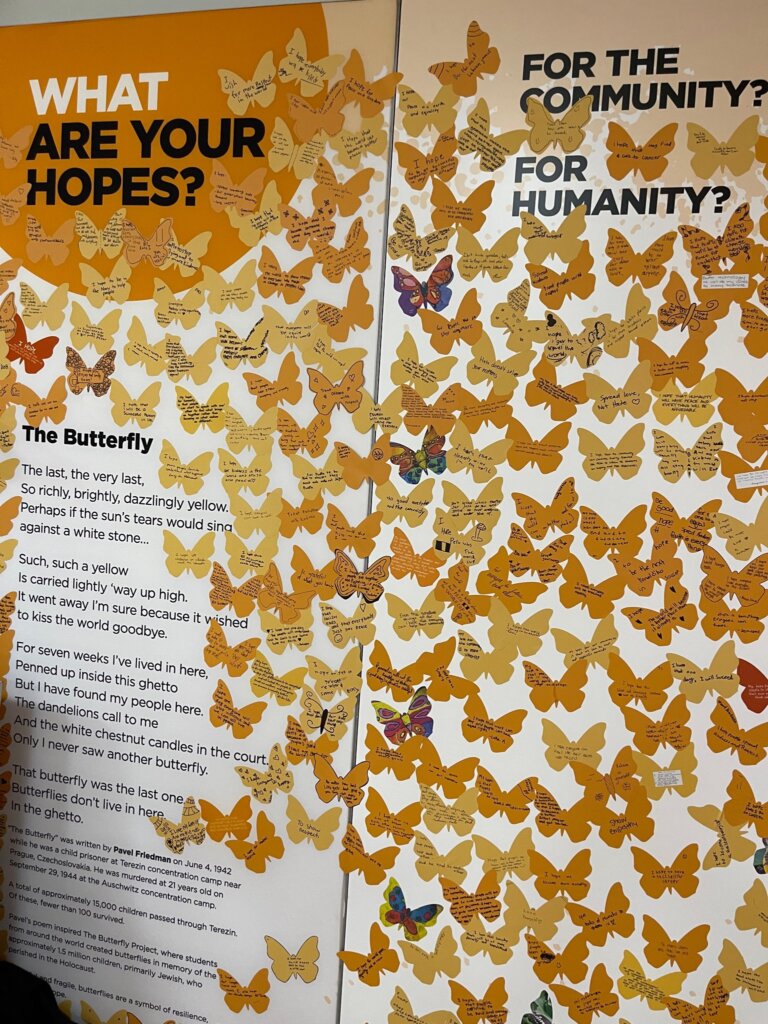Can this traveling Holocaust museum fix Holocaust education?
An exhibit designed to be installed in schools aims to make Holocaust education more impactful

Graphic by Angelie Zaslavsky
Last year, in White Plains, New York, classes took turns talking to Anita Lasker-Wallfisch, a Holocaust survivor, and Alan Moskin, a U.S. soldier who liberated the Mauthausen death camp. Except neither was actually there. Instead, life-sized images of the two, projected onto screens and programmed with voice recognition, answered questions asked by the students from a database of 2,000 pre-recorded answers.
It’s a tactic several brick-and-mortar Holocaust museums have turned to, thanks to an effort by the USC Shoah foundation to preserve survivors’ testimony, interviewing survivors and turning them into interactive images. But usually the displays aren’t so portable, making them inaccessible. So Common Circles partnered with the USC Shoah foundation to turn Anita and Alan’s recorded testimonies into the interactive display that could be installed at high schools as part of “We Are White Plains,” a traveling Holocaust museum designed for classrooms.
The project is the brainchild of Marla Felton and Sue Spiegel, who founded a nonprofit, Common Circles, with the somewhat vague goal of addressing bias to “empower users of all ages to explore their identities and the identity of others so that we can all get along better.” (The Holocaust is not mentioned specifically as a focus on the website.)
We are White Plains is the culmination of eight years of research and experimental programming, and can be adapted for different schools. Common Circles ran programs in St. Louis, Missouri, and Omaha, Nebraska, all advised and studied by professors and other experts, trying to learn how to effectively cultivate empathy and community. The techniques the team gleaned led to a unique approach to teaching the Holocaust, one that focuses as much on elements like art and the students themselves as it does on the history of World War II.
A majority of millennial Americans don’t know how many Jews died in the Holocaust. Nearly half can’t name a single concentration camp. Nationally, 11% even believe Jews caused the Holocaust, according to a study done by the Claims Conference. Clearly, despite the fact that 23 states mandate Holocaust education, something is not succeeding. Dara Horn, author of People Love Dead Jews, even published a feature in The Atlantic asking if Holocaust education is, in fact, making antisemitism worse. Can the techniques of “We are White Plains” fix the failures of Holocaust education before it?
A Holocaust museum about you
The exhibit consists of two parts. First, students enter a room with exhibits on art and identity, which Felton said use “techniques from psychology that can increase empathy and reduce bias.” There are optical illusions, meant to help students think about different perspectives. There are also photos of community members the students know, but in different clothing than they usually see — their school principal in her martial arts outfit, for example. These are meant to encourage students to think about their own “multilayered identities.”

“If we just jump into Holocaust education or teaching people about Judaism, they’re just not that interested,” said Felton. “What we realized is that we had to go broader with our education, and we start with self-identity.”
The students then enter the “dimensions and testimony room,” which is set up like a movie theater. There, students have a conversation with the images of Anita and Alan, about their experiences during the Holocaust, but also about their lives more generally: what they ate, music they like, their hobbies.
The museum does not delve into the historical context of the Holocaust, such as antisemitic propaganda or the political milieu that led to the rise of the Third Reich, instead focusing on the specific, human details of Anita’s and Alan’s testimony.
Students were invited to write down their own hopes for the future at the end of the exhibit; responses were varied, including both “I hope discrimination ends” and “I hope Peru wins the World Cup.”
Felton and Spiegel said their content is meant to supplement existing Holocaust education at schools, but noted that, for this first iteration of the museum, they were unable to talk to teachers beforehand, and they didn’t know what information students already had walking into the Q&A session with Anita and Alan. They said they were developing a supplementary curriculum for classroom teachers to use before and after their students tour the exhibit.
Spiegel and Felton said that the students were so intrigued by the technology that they stayed engaged. And, they said, because the speakers weren’t actually there in person, the students felt emboldened to ask touchier questions, such as why they didn’t try harder to escape and even expressing doubts about the reality of the Holocaust.
“At one point, I was like ‘Oh, it probably isn’t real,’” said one student of the Holocaust in a promotional video for Common Circles. “But then what I learned from Anita really changed my view and my perspective on it.”
Assessing the impact of Holocaust education

“Holocaust education is in this really interesting period of transition. Because survivors have really driven what happens,” said Alan Marcus, a professor at the University of Connecticut who studies Holocaust education, during a phone call about the exhibit. “Hundreds of survivors have spoken to thousands and thousands of students across school and you have this personal connection. That leaves this huge gap.”
Marcus explained that the emotional, empathetic connection conversations with survivors once provided is the lacking piece, a transition from what historians call “lived memory” to “learned memory. While it’s certainly possible to explain the history, it lacks impact without a personal element.
The professor, who is on the Common Circles team, studied the museum’s educational techniques. He surveyed about 1,500 students before and after they toured the museum to understand its impact, as well as talking to students, parents and teachers. The reaction he found was overwhelmingly positive.
“They were so grateful to be able to ask questions of the survivor,” Marcus said. “They’d learned things about the Holocaust they’d never heard.”
When I asked Marcus how the focus on students themselves aided the goal of educating about the Holocaust, specifically, he said that it’s important to connect history to the present for kids to get the most out of it.
“The Holocaust is kind of a foundation, the historical case study, to help people think about antisemitism and historical racism today,” he said. “I don’t think most teachers teach the Holocaust to teach the Holocaust.”
Felton and Spiegel said the exhibit is meant to be “additive,” and aims to make students curious to learn more instead of covering the entirety of the Holocaust. And instead of horror at the historical atrocities, Felton and Spiegel strive to leave students with an optimistic mindset. At the end of the exhibit, “they ask whether Anita and Alan have hope,” said Felton of the students. In the prerecorded answers, the survivors say that they do because the students are going to share these stories.”
“We tell them that we don’t want them to leave with bitterness or sadness, and we pass out candy,” Felton said. “We want them to leave with sweetness.”
















